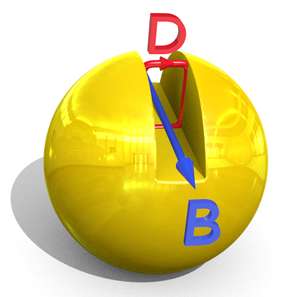Array of perfect nanometer-scale spheres that can control the flow of visible light may find use in invisibility cloaks

The optical properties of a material are predominantly determined by its constituent atoms and electrons and the way that these respond to electromagnetic waves. In natural materials, the diversity of possible optical characteristics is limited, and so metamaterials—artificial structures engineered to control the propagation of light—offer hope for a plethora of novel optical applications.
Arseniy Kuznetsov and Boris Luk'yanchuk at the A*STAR Data Storage Institute, Singapore, and their co‐workers, have now created a novel type of three-dimensional metamaterial that can influence both the electric and magnetic parts of visible light. Their approach provides a simple route to constructing unusual devices such as optical cloaks, which enable 'invisibility', and hyperlenses that offer super-resolution.
Metamaterials are arrays of subwavelength metallic structures called meta-atoms, which have been engineered to mimic atoms and their interaction with light. "Metamaterials provide a new route to controlling light at the nanoscale," explains Luk'yanchuk. "They pave the way for novel optical elements with unique functionalities that cannot be achieved with natural materials."
A common approach taken by researchers of optical metamaterials is to construct meta-atoms from rings of metal that each contains a small break. These so-called split-ring resonators need to be a few hundred nanometers or less in size to work with visible light, and any physical imperfections severely limit their performance.
Designing a split-ring resonator with both the electric and magnetic properties required to interact with these two different components of electromagnetic waves has also proved a challenge. "Magnetic resonance at visible frequencies could not be achieved with standard, flat split-ring resonator designs," says Luk'yanchuk.
Now, Kuznetsov and Luk'yanchuk's team have shown that a three-dimensional version of this structure—the split-ball resonator—could lead to nearly flawless metamaterials with a strong electric and magnetic response.
Using standard nanofabrication techniques, the researchers first created an array of gold or silver disks on a substrate. They then fired a high-power laser at each disk so that it melted to form a liquid droplet, which solidified into a perfect sphere, thus eliminating flaws. Finally, the team used a beam of helium ions to etch a trench into each nanosphere (see image).
The researchers confirmed that their split-ball resonators displayed a magnetic resonance within the visible spectrum, demonstrating a strengthened ability to 'tune' the optical responses of metamaterials.
In the future, the researchers could use the same method to pattern more complicated three-dimensional features on the meta-atoms, which would enable even more complex ways of manipulating light.
More information: Kuznetsov, A. I., Miroshnichenko, A. E., Fu, Y. H., Viswanathan, V., Rahmani, M. et al. Split-ball resonator as a three-dimensional analogue of planar split-rings. Nature Communications 5, 3104 (2014). dx.doi.org/10.1038/ncomms4104
Journal information: Nature Communications





















